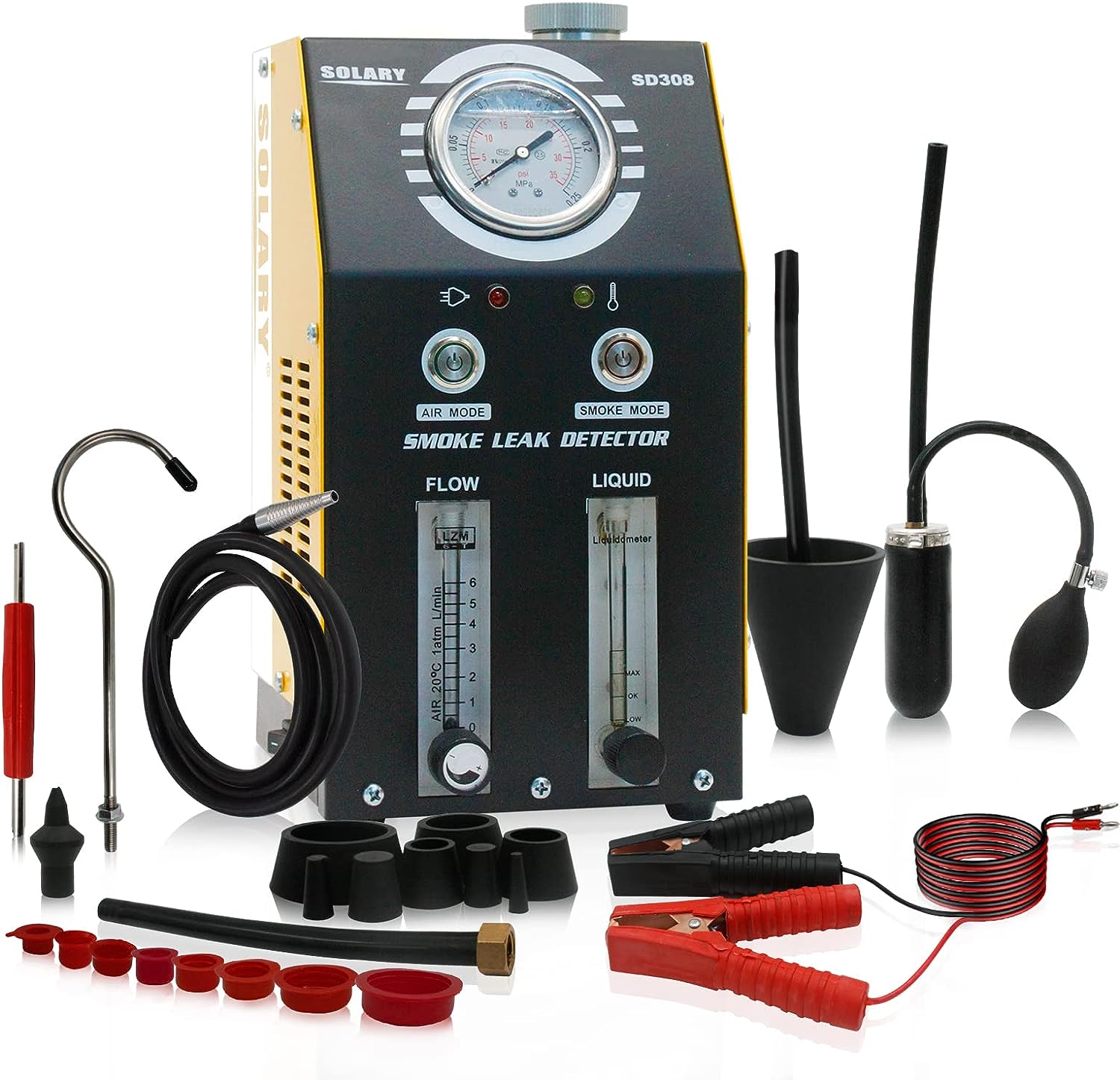Types of Smoke Leak Detectors
When it comes to detecting smoke leaks, there's no shortage of options in the market. Each type of smoke leak detector has its own set of pros and cons, making them suitable for different situations.
Let's dive into the diverse world of smoke leak detectors:
- Smoke machines- These generate artificial smoke that is introduced into the EVAP system. Escaping smoke visually indicates the location of any leaks.
Pros: Provides visual indication of leak location. Good for finding small leaks.
Cons: Messy, smoke can be harmful, doesn't integrate with vehicle diagnostics.
- Ultrasonic detectors- These use high-frequency sound waves to identify the ultrasonic hissing noise produced by evaporating fuel vapors at the source of a leak.
Pros: Precise leak detection, portable, integrates with diagnostics.
Cons: Only detects ultrasonic hissing sounds, so misses some leaks.
- Gas detectors- Specialized sensors can detect fuel vapor hydrocarbons that leak from the system. Different sensors detect different gases.
Pros: Highly sensitive, quick leak detection, portable.
Cons: Only detects certain gases, requires calibration, expensive sensors.
- Pressure testing- Pressurizing the EVAP system and monitoring pressure drops can identify leaks by the rate of pressure loss.
Pros: Simple, inexpensive, integrates with vehicle diagnostics.
Cons: Only finds large leaks, time consuming, not precise.
- Volumetric flow testers- These measure airflow volumes entering the EVAP system. An unexpected change indicates a leak.
Pros: Detects very small leaks, provides quantitative data.
Cons: Expensive equipment, time consuming, doesn't pinpoint location.
- Electronic leak detectors- Dedicated electronic devices plug into the EVAP system to monitor for leaks using pressure, volume, vapor sensing, or other methods.
Pros: Integrates diagnostics, efficient, quantitative data.
Cons: Requires expertise to operate, expensive equipment.
- OBD II scanners- Onboard diagnostics can detect EVAP system leaks by monitoring sensors while running EVAP leak detection tests.
Pros: Uses existing vehicle computer, inexpensive, easy to use.
Cons: Indirect measurement, unable to locate leaks.
- Liquid bubble test- Applying soap water to EVAP components can visually reveal leaks as bubbles form at leak sources.
Pros: Simple, inexpensive, good for visually finding leak points.
Cons: Time consuming, not sensitive enough for small leaks.
When choosing a smoke leak detector, consider the specific application, the size and nature of the leaks you need to detect, safety considerations, and your budget. It's essential to ensure that the chosen method aligns with your needs and the safety requirements of the environment in which it will be used. Always follow safety guidelines and manufacturer's instructions when using smoke leak detectors.

